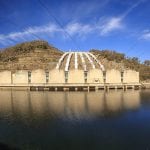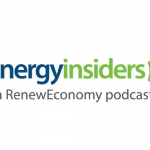Around The Web
RINs bounce on news of RFS waiver review
Brussels outlines “realistic” strategy for EU to reach net zero emissions in 2050
Great Barrier Reef: record heatwave may cause another coral bleaching event
42.6C temperature in Cairns broke a November record that has stood since 1900 by 5.4C
A record-breaking heatwave in north Queensland will further increase above-average marine temperatures, heightening the risk of another coral bleaching event on the Great Barrier Reef next year, scientists say.
Dozens of record November temperatures have been recorded in the region, most along the reef coastline, this week.
Continue reading...Diving force: experts join forces to save the world's coral reefs
Specialist diving group teams up with British conservation charity to lower impact of scuba tourism on threatened reefs
The threat posed to coral reefs by scuba diving in Egypt and Thailand is so serious that officials have banned certain operators or suspended the sport altogether, but now moves are afoot to make diving tourism more sustainable.
A partnership between the Professional Association of Diving Instructors (Padi), the world’s largest training group, and the UN-backed Reef-World Foundation, a British conservation charity, will encourage the industry to sign up to the Green Fins scheme, which helps dive centres to reduce their environmental impact and mitigate the damage the burgeoning sport causes to coral reefs worldwide.
Continue reading...EU Market: EUAs plunge below €19 after UK auction clears at record discount
Climate change: EU aims to be 'climate neutral' by 2050
LNG offset obligations could drive big carbon market in Western Australia
Seal colony in Norfolk expects more than 2,700 pups
Australian populations of threatened bird species halves in 30 years
Migratory shorebirds populations down by average of 70% from 1985 to 2015
Populations of threatened bird species in Australia halved in the past 30 years, according to a new national Threatened Bird Index.
The index is the first part of a large data consolidation project being undertaken by the Threatened Species Recovery Hub, along with the University of Queensland and Birdlife Australia.
Continue reading...One in six pints of milk thrown away each year, study shows
Analysis suggests 116m tonnes of dairy products are wasted globally, with almost half lost before they even reach a store
One in six pints of milk produced around the world is lost or wasted, according to research conducted at Edinburgh University for the Guardian.
Sixteen percent of dairy products – 116m tonnes – is lost or discarded globally each year, according to Prof Peter Alexander, a member of the newly formed Global Academy of Agriculture and Food Security. He calculated that retailers, distributors and consumers are responsible for half of this waste, throwing away roughly 60m tonnes of dairy a year.
Continue reading...Carbon capture and storage gets £20m 'sensible reboot'
Government scrapped £1bn plan in 2015 but now aims to build project within a decade
The UK wants to build its first project to capture and store carbon emissions from industry within the next decade, as part of a rebooted push by ministers to support the technology.
The government scrapped a £1bn carbon capture and storage (CCS) competition in 2015, with the then-chancellor George Osborne saying it was too costly. Earlier efforts had also collapsed.
Continue reading...Coal power on way out, sooner rather than later, says AEMO
 Top of the to-do list of AEMO's Integrated System Plan is to replace Australia's ageing coal fleet – a task, says Audrey Zibelman, that "absolutely needs to get done under any circumstance," and with least regrets.
Top of the to-do list of AEMO's Integrated System Plan is to replace Australia's ageing coal fleet – a task, says Audrey Zibelman, that "absolutely needs to get done under any circumstance," and with least regrets.
The post Coal power on way out, sooner rather than later, says AEMO appeared first on RenewEconomy.
Transparency lost as Snowy Hydro fights for its future
 Snowy Hydro refuses to identify the winning bids for the "game changing" wind and solar tender, and argues that the transmission costs of its proposed pumped hydro plan should not be subject to normal regulatory review.
Snowy Hydro refuses to identify the winning bids for the "game changing" wind and solar tender, and argues that the transmission costs of its proposed pumped hydro plan should not be subject to normal regulatory review.
The post Transparency lost as Snowy Hydro fights for its future appeared first on RenewEconomy.
Sydney storms could be making the Queensland fires worse
From burping cows and food miles to greenhouse gasses
Tesla teams up with Energy Locals for S.A. virtual power plant
 Energy Locals partners with Tesla for virtual power plant, lifting hopes that original 250MW plan can be achieved. But local solar manufacturer Tindo left out, and not happy.
Energy Locals partners with Tesla for virtual power plant, lifting hopes that original 250MW plan can be achieved. But local solar manufacturer Tindo left out, and not happy.
The post Tesla teams up with Energy Locals for S.A. virtual power plant appeared first on RenewEconomy.
Climate change: The world is 6% warmer already, it’s time to act
 Latest climate data shows the magnitude of human-caused emissions this century significantly affects projections for the second half of the century and beyond.
Latest climate data shows the magnitude of human-caused emissions this century significantly affects projections for the second half of the century and beyond.
The post Climate change: The world is 6% warmer already, it’s time to act appeared first on RenewEconomy.
Australia isn't on track to meet its 2030 emissions target, UN report says
About half of the G20 countries will fall short of their Paris agreement pledges, scientists warn
• Hundreds of students striking over climate change descend on parliament
Australia is not on track to meet its 2030 emissions reduction targets and global greenhouse gas emissions are showing no signs of peaking, a new UN report has warned.
In its annual emissions gap report, which looks at the gap between carbon reduction policies countries have in place and what is required to keep global warming to well below 2C, the UN says global emissions have reached record highs.
Continue reading...New energy networks Australia chair appointed
 Energy Networks Australia CEO Andrew Dillon has welcomed Tim Rourke, CitiPower, Powercor and United Energy Chief Executive Officer, as the new Chair of the Energy Networks Australia Board.
Energy Networks Australia CEO Andrew Dillon has welcomed Tim Rourke, CitiPower, Powercor and United Energy Chief Executive Officer, as the new Chair of the Energy Networks Australia Board.
The post New energy networks Australia chair appointed appeared first on RenewEconomy.
Energy Insiders Podcast: Victoria’s poll win and Labor’s energy plan
 What does Victoria poll result mean for renewables, and has Labor got it right with its new energy plan?
What does Victoria poll result mean for renewables, and has Labor got it right with its new energy plan?
The post Energy Insiders Podcast: Victoria’s poll win and Labor’s energy plan appeared first on RenewEconomy.



